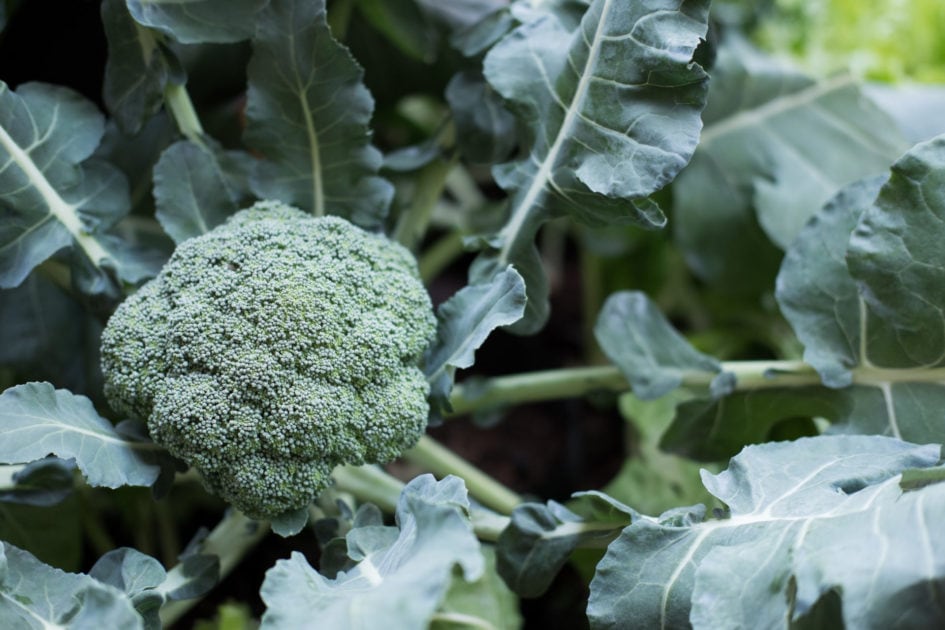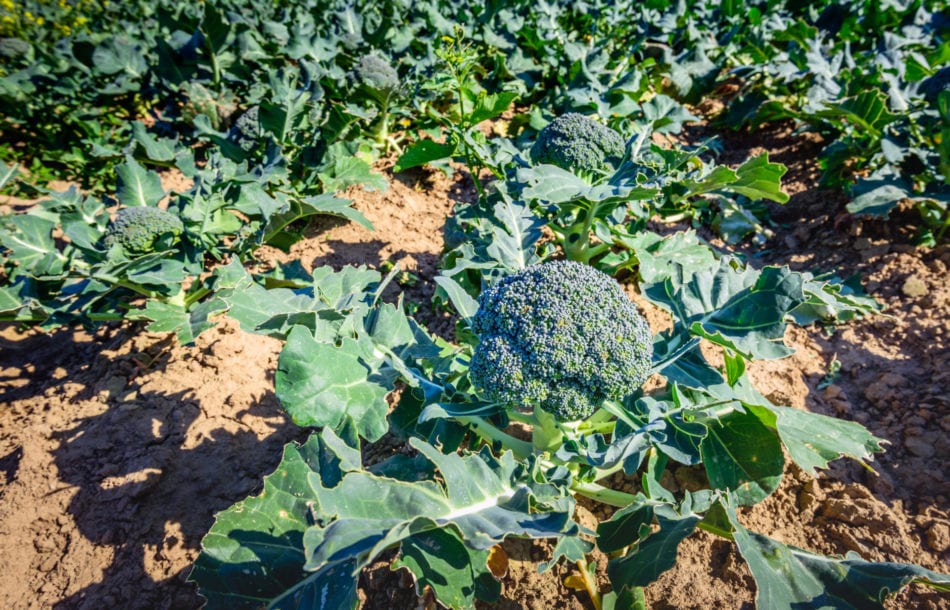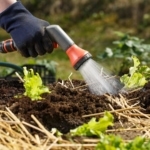How To Grow Broccoli Successfully

Broccoli is a surprisingly complicated vegetable and can be hard to grow. It is one of the top vegetables that our readers said they had difficulty growing—and for good reason! But, if you are up for the challenge, follow our helpful growing guide below!
General notes: Planting timing and watering details are very specific. Temperature is also a big factor. Long periods of hot weather may cause heat stress, which damages the plant and its development.
Standard broccoli prefers cooler temperatures and grows best in the spring and fall. For this reason it is known as a “cool season” vegetable.
Getting Started: Two Methods
1) Starting Seeds Indoors & Transplanting
- Spring planting: Start seeds indoors 6 to 8 weeks prior to your last frost dates.
- Be sure not to expose spring transplants to frost.
- Summer planting (for a fall crop): Slightly less time is needed for a fall crop. This is because seedlings tend to grow faster in the summer than in the spring. Start seeds 6 weeks prior to planting. Calculate your plant date by counting back approximately two months from your first frost dates.
- Bear in mind that broccoli may tolerate a light frost when it is planted as a fall crop.
- Standard broccoli is a large plant, so place transplants 18 to 24 inches apart.
- Space rows three feet apart.
2) Direct Seeding Outdoors
- Sow three broccoli seeds one half-inch deep every foot in row.
- Space rows 18 to 36 inches apart.
- Once the plants are established, thin them to one plant for every foot of the row.
Water
Consistent soil moisture will produce the best heads. At a minimum, supply one inch of water per week. There are two critical watering periods:
1) When the transplants are being established, just after planting.
2) As the head is developing.
Soil
Well-drained, fertile soil with a pH of 6.0 to 7.5 (slightly acidic to slightly alkaline.
Light
Broccoli plants prefer full sun, but may tolerate some shade.
Fertilizer
Before transplanting, work well-rotted manure or aged compost into the soil. When plants are about 4 inches tall, side dress the plants by working more compost into the soil several inches away from the roots.
Broccoli is a heavy nitrogen feeder, making nitrogen-rich compost a good source for the nutrient.
Common Diseases & Pests
Black rot, alternaria, cabbage looper, cabbage worm, flea beetle, and root maggots. To control insect pests, place summer-weight row covers over the plants at time of transplanting.
Harvesting
When harvesting broccoli, cut the center head before its flower buds open. The plant will produce secondary shoots if left in the ground. Be sure not to cut only the center head and not the small secondary shoots which will start to emerge a few inches down on either side of the stalk. Harvesting shoots as they develop will encourage more growth.

Additional Notes
Temperature is a crucial factor in determining whether the plant will develop a head properly. Optimal temperature for broccoli head production is 65 to 70 degrees Fahrenheit, making spring and fall crops the most successful.
It can be challenging to achieve a perfect head with standard broccoli.
Here are some other varieties to consider:
1) Leaf broccoli. This type may be harvested at leaf-stage or left to develop as small florets emerge;
2) Broccoli rabe. This type is easy to grow and matures fast.
3) Chinese broccoli (Gailon crossed with mini broccoli). This type produces many side shoots over a long period. It grows well even under stress from heat and drought.
4) Winter broccoli (also known as late-sprouting broccoli). This variety forms its spears of florets best in temperatures under 50 degrees Fahrenheit.
RELATED: 9 more plants for a fall harvest
Community Is Important!
Besides our guide, we would like to underscore the importance of community with gardening. Be sure to talk with local growers and have conversations about what to do and when.
You can always “wing it” and learn from your mistakes, but when we share and lear from each other may get better results faster!
Tell Us Your Experience
Have you tried growing broccoli before?
What are some challenges that you faced?
Let us know in the comments below!

Janine Pineo
Janine Pineo has been gardening all her life in Maine and writing about it for more than two decades. More of her writing can be found on her website, GardenMaine.com.






Question: If you plant for the spring, what do you do with the plant in the summer? Do you pull it up or let it keep growing? Sorry, I know it’s a dumb question, but I’m just starting.
Absolutely not a dumb question! Everyone starts somewhere and asking others is how to learn! It really will depend on where you live. I cut my broccoli (from the center stem only) pretty early and I have broccoli for most of the growing season. If you have a really hot summer, you may need to pull it, but I usually plant my next round in early August (2 months to first frost). I usually plant some herbs around my broccoli so they make it pretty and repel pests (dill, basil, mint…). Good luck and keep us posted on how your garden grows this year!
Living in Ga the heat has been a challenge to us on growing broccoli. I tried starting seeds and did in house starts and direct sewing of seeds the heat got them. So I purchased some started ones at feed store and we set them out in our raised garden beds. we have been watering them regularly and they seem to be doing real well as temps have cooled off a bit and we only had one week so far this fall after planting that it hit 80 degrees outside and then cooled off. With it almost being November I figured it will help with the cooler temps. If it works out this will be the first success we have had in about 3 years of messing with them.
We live in Indiana and have had good luck with broccoli — I do start it indoors, harden off the seedlings on the back porch, then plant in raised beds by mid-May. It’s too wet, cold, and windy here to get much started earlier in the spring! The past two years I have used a floating row cover — actually a fine netting which this year we stretched over plastic plumbing pipe hoops that are held in place with short pieces of rebar (bought all of this at the local home & garden shop). Without the netting we had problems with tiny worms from the cabbage butterfly — with the netting, no problem! We do keep it well watered, and the extreme heat was not great for it this summer, but we have harvested heads already and frozen about 6 quarts, and more is coming along. It’s delicious! I have grown Blue Wind, Eastern Magic, Waltham and DiCicco. We do prepare the raised beds with Black Kow manure and compost, and I do add fertilizer — usually what I have on hand. When the plants are small I use dilute fish fertilizer, then as they grow some granular 10-10-10 sprinkled around, and some foliar-feed balanced spray.
Hi Lee Ann,
Than you for sharing your growing experience! Sounds like you have a green thumb!
Wow, did not realize it was a booger to grow. Mine seems to be doing well, but glad for these tips…we are going into the heat of the summer now
Thanks Ann,
Good luck! We have one that’s growing slowly – not sure what’s going to happen. Glad you found some useful tips in our article.